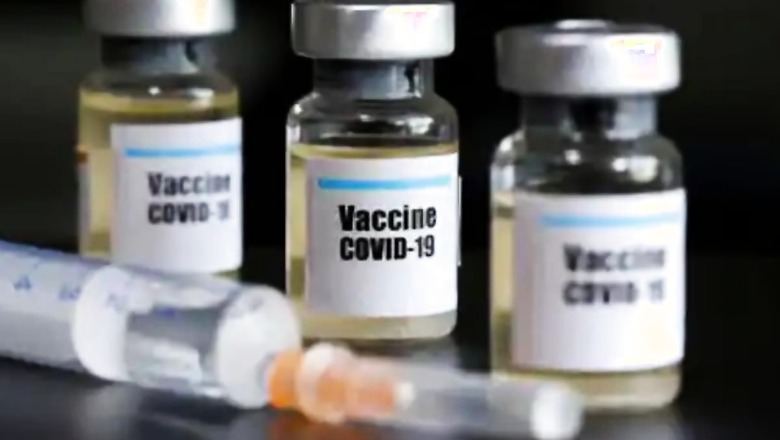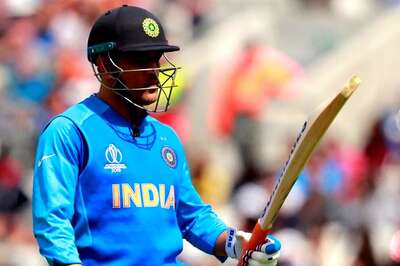
views
On Sunday, India crossed the mark of four million cumulative cases and surpassed Brazil to become the country which has the second highest tally of coronavirus infections in the world. Amidst the record surge in cases, News18 spoke to leading clinician-scientist and vaccine expert Professor Gagandeep Kang, who works at the Gastrointestinal Sciences division of Christian Medical College, Vellore.
In July, Prof Kang resigned from the post of executive director, Translational Health Science and Technology Institute, Faridabad, to get back to her research and teaching. In this interview, she spoke to us at length on issues ranging from India’s current infection trajectory and sero-surveys to vaccine development and what research we ought to do to detect the next emerging pandemic.
Kang also talked about the challenges in detecting Covid-19 cases, the resources available to fight the virus and the infections emerging from zoonotic diseases.
Edited excerpts from the interview:
On Sunday, India surpassed Brazil to become the country with second highest tally of Coronavirus infections globally. What is your assessment of the trajectory of infections and what is your prognosis for the months ahead?
I think if you look at the number of cases and the pattern that we’ve seen in the past month and a half, it’s very difficult to believe that the trajectory will change unless something radical happens. This means that given our population and its size, we are going to see a much larger number of cases, which will not be unexpected and this climb will continue for several more weeks.
Now, the thing is the climb is made up of multiple individual peaks in cities and towns. So if you look at trajectories of the outbreak, you really need to look at trajectories at a much more granular level than we are looking at them now where we track just the national numbers. So far, we’ve done that for the larger cities. But I think we should be looking at characteristics of curbs for towns and in rural areas where cases have begun to emerge. This is an opportunity for us to learn and to decide if we can actually try different approaches to control.
Talking about serological surveys, you have been involved in the Mumbai one. Are we using them effectively to have preventive strategies on the ground?
I was a proponent of sero-surveys right at the beginning because for me to understand disease burden at the country level, sero-surveys are an incredibly useful tool. And you should repeat sero surveys over time, but you need to understand what the use of those sero-surveys are. I was initially thinking about it from a point of view of estimating burden and estimating trajectories towards herd immunity, because that could feed into modeling studies and that would tell us okay, this is what the future looks like if a place has these kinds of characteristics. Using sero-surveys for control requires a very detailed analysis of the sero-survey data.
What is the age distribution, what is the socio economic status of people who are infected? Where are you seeing high levels? Where are you seeing low levels? What is the situation on the ground there in terms of access to health? Where do we need to strengthen? Where can we relax because we know that a large proportion of the population has already been exposed, so we don’t expect to see a large number of cases.
I have not seen data that has been presented as informing decisions for the future. But we should be thinking about designing and doing sero surveys so that you have like a national plan that can then be locally implemented, depending on what the results of your sero survey are.
Prof Kang, you were part of the ICMR’s vaccine sub-group that was disbanded soon, why did that happen? Also, what is your view on our approach so far towards indigenous vaccines?
It was the drugs and vaccines taskforce. We had three meetings where we were just getting set up. And then the discussion was essentially around the fact that if you look at responsibilities for vaccines, then one that DBT (Department of Biotechnology) plays a larger role in the development of new vaccines compared to ICMR, so it just didn’t make sense to continue with that. It was a fair enough approach to take.
On vaccine development, DBT has put in a lot of time and effort looking at which vaccine candidates they can support and the companies have done a lot by themselves. Recently, ICMR has been involved with the three vaccines that are in clinical trials. So one way to look at it is if you look at upstream development that is really DBT role and if you look at clinical development, then both DBT and ICMR might have a role in that and that is how we have seen it play out.
Recently, The Lancet published preliminary results on the trials of the Sputnik vaccine. What did you make of the data published, is it sufficient, considering the Indian government is in talks with Russians on this vaccine?
What we have got is early phase, small amount of safety data and small amount of immunogenicity. That is like phase one and maybe small phase two type study because you have both safety and immunogenicity.
If the government is in talks about now doing increased clinical testing of the vaccine then that’s fine. That’s exactly what the government should be doing. The fact that the Russians have licensed or certified or registered the vaccine does not mean that it is ready for primetime use in a country like India, you need clinical efficacy data on the vaccine.
Many people look at efficacy as meaning different things. The way I think about it is safety, immunogenicity and efficacy are three separate things. If we say, the vaccine was efficacious in inducing an immune response, well, I think the vaccine was immunogenic. And if you use the word efficacy, you should have a clinical outcome against disease. And so there is confusion there. And I don’t think that we should use any vaccine where we don’t have clinical efficacy.
Globally, scientists were researching on ‘disease X’ prior to this pandemic. What should we do to detect the next emerging pandemic?
This is one disease X, there are many diseases. I think the first thing that we need to do is understand that we need to be screening, we need to be testing people with defined syndromes much, much more widely than we do at the moment. And we need to be looking at clusters in humans. When we look at clusters in humans and animals, we may start to see signals of something unusual happening where you cannot make a diagnosis. So, people have discussed ‘One Health’ approaches for a long time. But, to get agriculture and animal husbandry (departments) to talk to health (department) is not the simplest thing in the world.
But that needs to happen for surveillance. Remember that one thing people keep talking about China and the wildlife trade, you could get the next disease starting from your domestic dog. Viruses cross species barriers and if they can establish themselves and transmit among humans, it is not necessary that you have to eat an exotic animal to get the disease. It is important that we think about diseases without borders to have a global approach to surveillance.
So if you take a look at an organization called the Eco Health Alliance, they’ve been working in Southeast Asia and other parts of the world, looking at ‘one health’, sampling bats in China and many other places, looking to see what is the diversity of viruses in the world. If you know ahead of time what viruses are out there, the chances are that it will take you a much shorter time to develop a tool that will allow you to screen for the presence for those types of viruses in humans and animals. These surveillance approaches are very doable today.


















Comments
0 comment